World War Two
How World War Two changed people's lives in Kirklees
World War Two began on 1st September 1939, when Adolf Hitler and the Nazis invaded Poland. Over the next six years, the war had a profound impact on the lives of people living in Britain.
While towns in Kirklees did not experience bombing on the same scale as elsewhere in the country, they did experience some bombing. For example on the night of 12th December 1940, bombing raids at Dewsbury and Batley killed seven people, including Private Herbert Courtney Channon of the Royal Army Service Corps who was struck in the neck by shrapnel and killed instantly. Then, on the night of the 14th March 1941, Huddersfield was damaged by bombers who were seeking to destroy the David Brown factory, which was producing parts for the Supermarine Spitfire. This was part of a wider campaign that saw 4,600 houses destroyed and 65 people killed across West Yorkshire.
In 1938 the government began plans to evacuate children from Britain's large cities to rura areas where there was less risk of bombing raids. In 1940, areas in Kirklees such as Marsden and Batley began to receive evacuees. The area also hosted people who were escaping Nazi occupation in Europe. In 1940, soldiers were carried into houses in Trinity Street, Huddersfield, having being rescued from the beaches at Dunkirk. Following the Nazi occupation of the Channel Islands there were also refugees from Jersey. Not all of those hosted wanted to be here, a prisoner-of-warcamp was set up at Stirley Hill which houses German and Italian prisoners.
The regions looms and mills were busy making cloth for uniforms and other military purposes, with women taking on key roles to replace men fighting overseas. In Holmfirth, Bamforth boosted morale by replacing their normal postcards with those with war-time themes and poetry. In Huddersfield, the Imperial Chemical Industries, previously pioneers in textile dyes, become involved with the country's nuclear weapons programme code named Tube Alloys. However, workers were sometimes accidentally gassed, and had to be taken to moors above the Colne Valley until they recovered.
Huddersfield residents had to follow blackout regulations, which included no naked light, no streetlights and no lights from shops, advertisements, or vehicles. Smoking outside was also forbidden during the hours of darkness. Rationing of food and clothing was introduced to ensure people had enough to eat and wear. Children helped by growing vegetables at home and at school. Organisation were formed in the area to help the efforts on the Home Front. For example, the Local Defence Volunteers, later known as 'Dad's Army' who were too old to fight and volunteered to defend local pits and factories.
The consequences of the war can still be found in the area. The dead are commemorated in war memorials and by the many military graves in the region's churchyards, whilst on the moors above Holmfirth, aircraft wrecks can still be found.
What to expect in the box
The items in bold are original items, please take extra care with these.
The British WW2 Anti Gas Glasses were issued to soldiers during World War 2 as a protective measure against gas attacks. The glasses came in two variants, one with clear lenses and the other with tinted lenses for use in bright sunlight.
The glasses were designed to protect the eyes from harmful gasses that could cause irritation and blindness.
During World War 2, gas attacks were a very real threat, and soldiers were required to carry protective gear at all times.
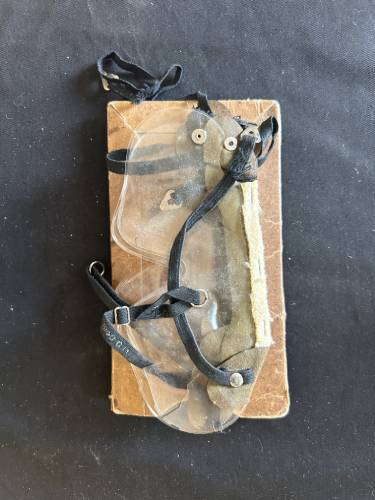
This was a handheld noise-making device used to warn people of an air-raid.
By holding the handle and spinning the rattle around it would make a distinctive clicking noise. The all clear would be given by a ringing bell.
Aid raids were when planes would drop bombs on cities during the war. For example, on Christmas Eve 1944, a bomb fell in a field at Dumb Steeple Farm in Grange Moor, Huddersfield.
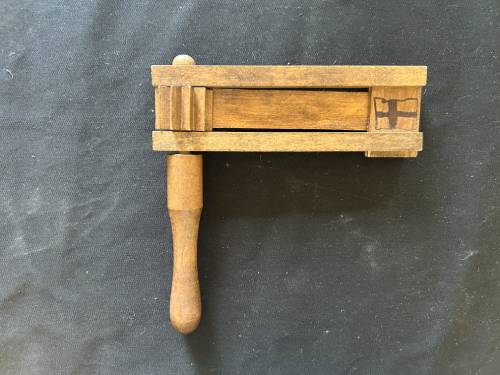
When a rifle was shot, it created a chemical that could damage the gun if left on it for too long, therefore soldiers were advised to pur boiling water through their rifles after it had been fired.
Then it would be dried using a pull through rifle cleaner like this one.
Most soldiers were issues with a rifle when they signed up, and it was their responsibility to keep it maintained.
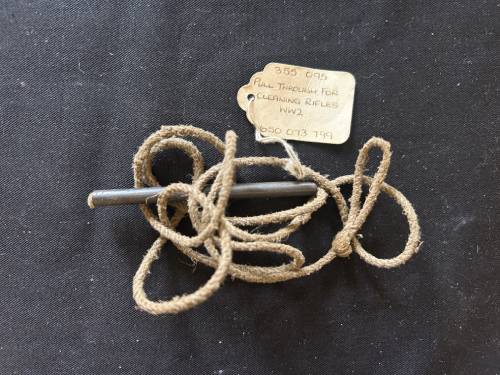
Modern warfare brought significant injuries and trauma, which led to many advancements in medicine.
Field dressing packs were issued to soldiers so that they could cover their own, or a friend's wound in an emergency. Packs would typically contain 2 dressings and safety pin for fastening.
Other supplies included anti-gas ointments, for use on skim contaminated by Mustard Gas, and anti-dimming cloths to stop gas masks from steaming up.
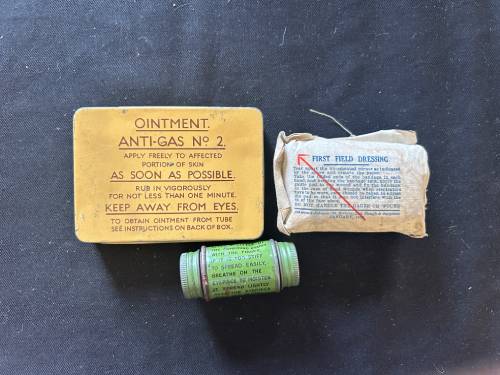
Ration books contained removable stamps for rationed items like sugar, meat, cooking oil and canned food.
A person could not buy rationed item without also giving the shopkeeper the ration stamp.
At the start of the war, Britain was importing most of its cheese, sugar and fruits. Due to blockades during the war, items could not be imported so the government had to restrict the amount that people could buy.

It was not only soldiers on the battlefields who lived in fear during World War Two, as bombinds and invasion became a very real threat to ordinary citizens in England.
Air raid booklets were issued to households before the start of the war to let them know what to do during an air raid.
The first steps before the raid even began was to blackout the house, which meant making sure no light was visible from the outside. People were then advised to shelter at home in air raid shelters dug into their back garden, or under a table. Those without a shelter at home would go to communal shelters such as underground train stations.
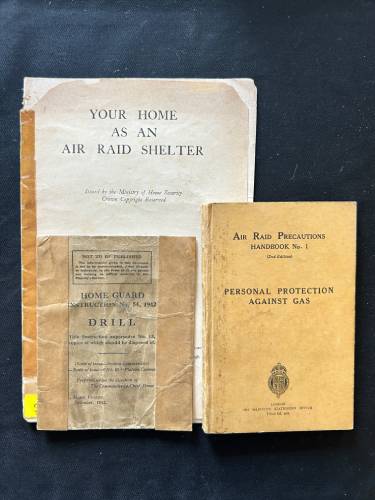
A helmet like this would have been worn by an Air Raid Warden. The Air Raid Warden Service was set up in 1937.
Wardens would be responsible for providing advice on what to do during an air raid. They would also extinguish small fires, administer first aid and investigate unexploded bombs.
Women joined the air raid wardens in 1938 through the Women's Voluntary Service.
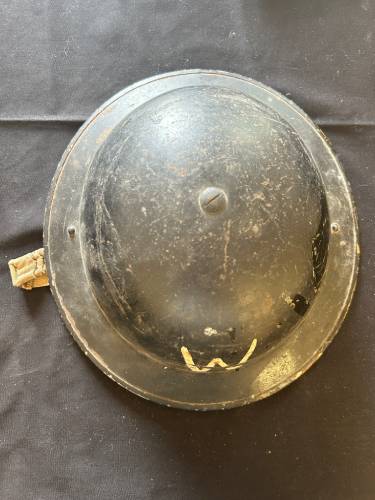
Gas masks were designed to stop the wearer from breathing in the poisonous gas. The mask would be coated in rubber to stop gas seeping through the material and would have a filter to allow clean ari to be breathed in.
Gas masks were issued in 1938 in expectation of war breaking out and by the start of the war in 1939 over 44 million had been distributed.
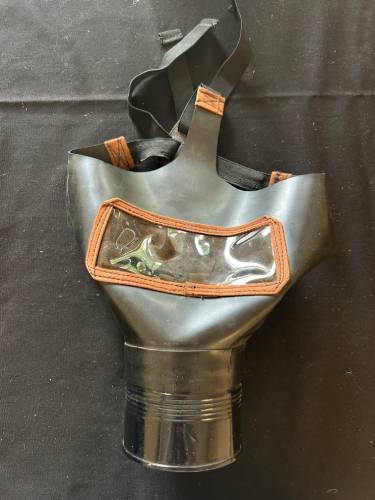
Fashion in the 1940s was influenced by the war and the impact of rationing.
This era was characterised by clothing which was comfortable and practical.
Instead of wearing matching suits, women began to mix their blouses with different pants and skirts. Ballet shoes were a popular alternative to heels, and came in all kinds of colours and patterns.
For men, military style blend into everyday wear.
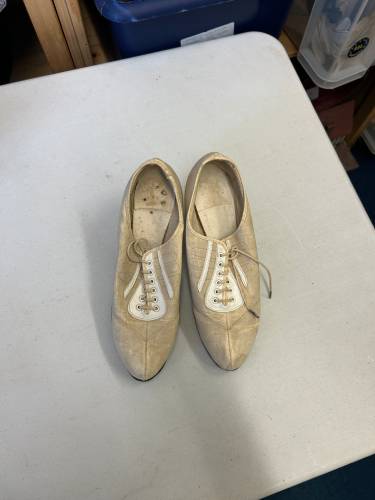
A watch face guard would be worn to prevent a watch face from shattering during an explosion.
Between 1944 and 1945 150,000 watches were issued to British soldiers as a part of the war effort, as it helped to better coordinate miliary movements.
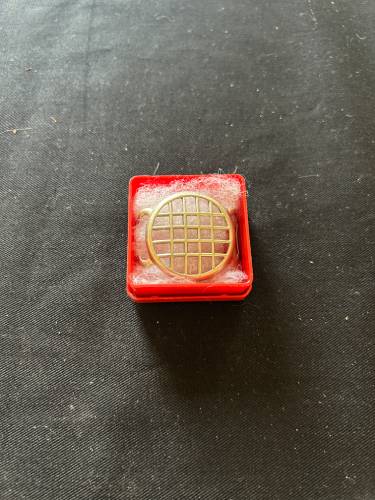
Hand-written letters were the main form of communication during World War Two. The British Army Postal Service delivered around 2 billion letters during the war.
Soldiers' only means of communicating with their families back home would be through letters. Later in the war, evacuees would have to write letters to their families back in the cities.
During World War 2, all mail was censored to prevent sensitive information from falling into enemy hands.
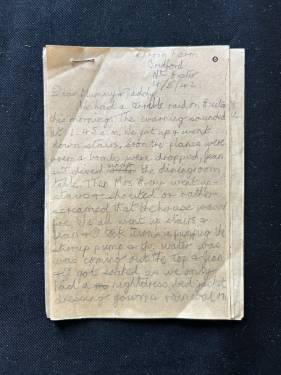
On the eve of war, cinema going flourished as a pastime of the British public. A 1938 newspaper survey found that 31% of the population went to the cinema once a week, 13% twice, 3% three times, and 2% four or more times.
This continued during the warm whilst other social events helped to raise funds for soldiers to boost morale.
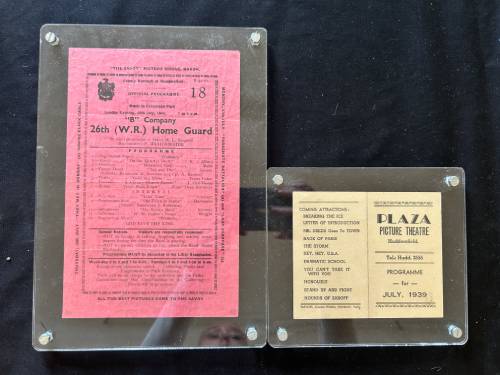
The Women's Voluntary Service was founded to recruit women to help civilians during air raids. However, that role expanded to include helping with the evacuation of children later in the war.
By 1943, they had over a million volunteers who helped with every aspect of the war effort, from collecting salvage to knitting socks for soldiers.
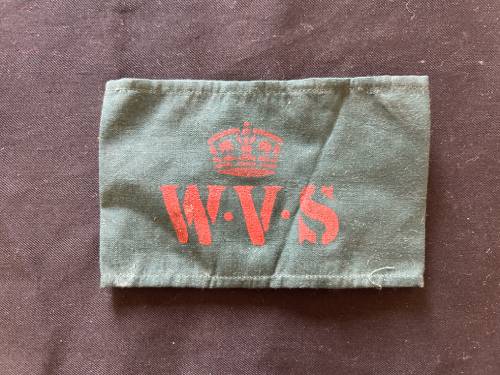
With millions of men fighting on the front line, the wear was an uncertain and scary time for women left at home, who did not know when their husband, sons, father or brothers would return.
Women become vital to the home front, working as mechanics, engineers and munitions workers in factories, as well as working in the armed forces as nurses and ambulance drivers.
This handkerchief represents the impact of the war on women.
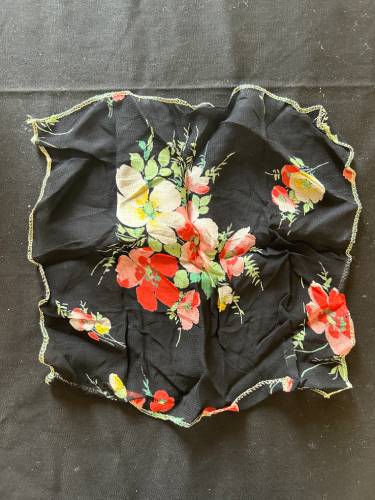
Eggs were heavily rationed during the war.
In 1942, powdered eggs from the United States began to be imported.
Only one tin was allowed every two months, but this was equal to 12 fresh eggs, These powdered eggs could also last a long time in the tin and did not go out of date easily.
While they did help feed the nation, many complained about the taste and texture.
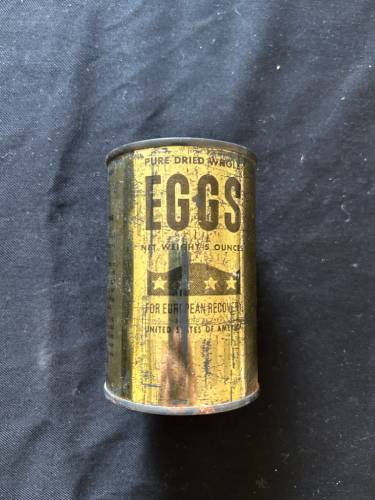
In the lead up to the war, the government made plans to conscript single men between 20 and 22, and give them six months military training.
When war broke out conscription expanded to able-bodied men between 18-41. Men who held vital jobs like farming, baking, medicine and engineering were exempt.
This further expanded in 1941 to include military service for men under 51, and some form of national service for men under 60. Unmarried and childless women between 20 and 30 were also liable to be called up.
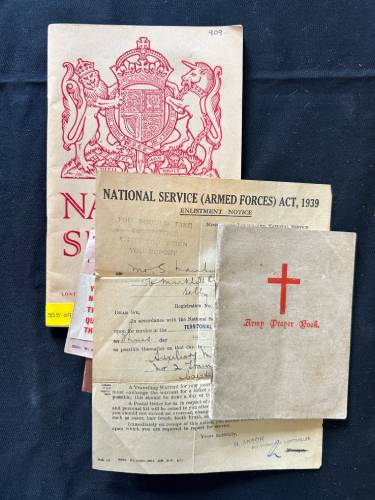
Morse Code was invented in the 1830s, and uses dots, dashes, and spaces to represent letters, numbers and punctuation marks. Morse code is transmitted using a telegraph machine or visual signals.
Morse code was used widely during World War Two, to send messages and to identify locations for pilots. Field armies also used morse code to communicate with each other over long distances.
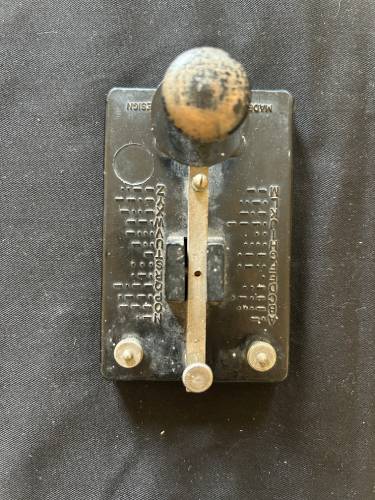
Explore the following themes using the objects
- Social change
- Women's experience
- Diet
- Health
- Innovation
- Communication




